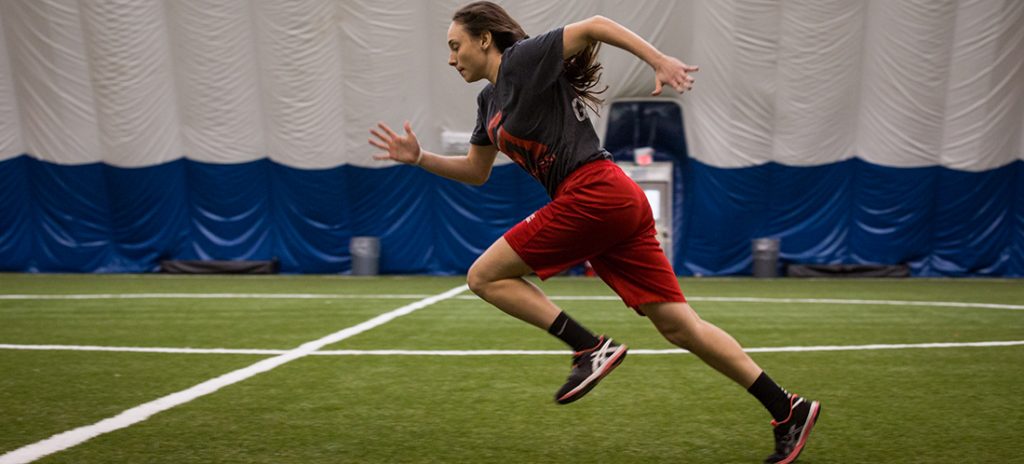Value of Sprinting is a Skill
Sprinting is one of those skills that are taken for granted. Most of the time we just say “Go run a few sprints” without knowing the outcome of the sprint work. Here are my views on the value of sprinting.
Other than track athletes, I probably don’t assign enough sprint work with my athletes. Although maybe not a good excuse, I am always trying to improve multi-directional short bursts and deceleration. Secondly, if you use safe sprint training you need to have a smooth surface like a track, soccer field, or a long stretch of land that is suitable for sprinting.
Builds Strength
I am not going to explain all the biomechanical aspects of sprinting. I will explain the value of sprinting to athletes. It builds strength in the total body. If you ever have a chance run four to eight 10 second sprints at close to full effort, then you will be surprised how sore you will be the next day.
Compared to acceleration training, sprinting demands your muscles to fire consistently coordinate the concentric and eccentric components for a long duration. It also demands a good range of motion in the arms, legs, and hips. The core musculature works hard to fight over rotation and to “sling” the arms and legs forward after an aggressive stretch occurred from the backside rotation and to stabilize the spine. This is why the abdominals will often be sore after a workout, especially when you have not sprinted in a while. All-in-all, it is quite demanding.
Break Down
Here is how to break down sprinting so young athletes don’t become injured by going out too soon, too long, and too hard:
- Start young athletes out learning proper acceleration at 15-25 yards. This will build strength in the early phase of sprinting and allow the athletes to learn to drive the knees and properly use the arms. 4-6 reps and 1-2 sets for roughly 3-4 sessions.
- Next, after the athlete shows the ability to maintain basic form and also able to recover, without extreme soreness, stretch the distance out to 30-50 yards. This will build leg and hip strength without form breaking down due to sprinting too long. 1-2 sets of 4-6 sprints at 50 yards will be a great foundation for longer sprints. Perform for 3-4 sessions.
- Finally, work the athletes up to performing ladder sprints. 40’s, 60’s, 80’s, 60’s, 40’s. Eighty yards is plenty for young athletes (15 and under) to learn proper sprinting. If they are track athletes and training to run sprint events then they will need to learn to sprint further. For the court and field sport athletes, shorter sprinting will be fine. I would suggest performing 1-2 sets of the ladder allowing plenty of rest between each sprint.
Remember, you are using sprinting to build strength and running coordination. Most athletes that are not sprinters in track and field will not perform full out sprints for more than 40 yards. Sports like football, soccer, lacrosse, and field hockey may have bouts of long sprints occasionally. The purpose of sprint training is more for the physical development of the athlete.
Sprinting full speed for longer than 25-30 yards can be a potential injury for un-prepared athletes, therefore, make sure you work them up to longer sprints.

